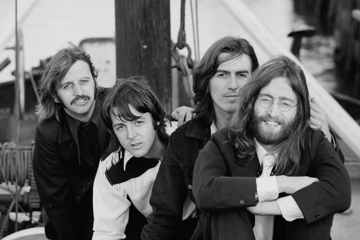Michael Moore’s New Doco Is Full Of “Crazy Optimism”
“Where To Invade Next, despite its provocative title, is a film filled with abundant positivity.”
WHERE TO INVADE NEXT
At some point, between the dawning of Obamacare and the legalisation of marriage equality, Michael Moore has turned into a “crazy optimist”. It’s possible that, in the face of Donald Trump’s current Republican-nomination campaign, that optimism could be wavering. But as of 2015, when Where To Invade Next premiered in Toronto and sparked a bidding-war amongst distributors, Moore was full of goodwill and love. In turn, his seventh documentary feature —and first since 2009’s Capitalism: A Love Story— is a film filled with its own kind of crazy optimism.
It marks quite a late-career pivot for Moore, whose movies, whilst populist entertainments filled with comedy, have often been marked by a sense of anger, ire, resentment. Moore’s latest cinematic lark, though, shelves the seething at the state of his nation. Instead, Where To Invade Next, despite its provocative title, is a film filled with abundant positivity.
Don't miss a beat with our FREE daily newsletter
Here, its central gimmick is that Moore will ‘invade’ European nations and ‘steal’ what he wants from them. But instead of oil or political gain, Moore wants to abscond with social policy; bring back things to his homeland that can change the quality of life. Like the free university education of Slovenia, the 8 weeks annual paid vacation of Italy, the gourmet school lunches and sex-positive sex-ed of France, the government-funded women’s healthcare of Tunisia, the decriminalised drug-possession of Portugal, the world-leading education ideals (no homework, less hours at school, more play) of Finland, the no-after-hours-contact of German workplaces, the lenient prisons of Norway, the prosecution of fraudulent bankers in Iceland.
As Moore patriotically points out, many of these ideas were American-born; his hope is that they can be imported back home, reclaimed with as much fervour as American’s show for gun ownership. Where, in the past, Moore would’ve wielded America’s lack of empathy for its citizens as a cudgel —all these measures coming at the cost of profits only to the Land Of The Free’s corporate overlords— here the critique is measured, the hope palpable, the human warmth abundant. It’s not a lament for the way things are in America, but a tribute to the way things are in other nations.
Perhaps not coincidentally, the warm-and-fuzzy Moore hasn’t set the box-office alight. Where To Invade Next is every bit as accessible as anything he’s made, and it coheres, excellently, as a kind of cinematic, documentary-concept gambit. But after setting himself up as a voice of dissent in W.-era America, Moore’s mass-cultural appeal was apparently circumstantial; Fahrenheit 9/11’s biggest-documentary-ever success no longer a symbol of its maker’s bankable status, more a sign of an already-forgotten time.
SHERPA

Sherpa isn’t a job title, it’s an ethnic group; a people whose historical location, high in the Himalayas, has naturally blessed them with capacity for labour at extreme altitudes. That’s the first, simplest, clearest revelation that comes in Jennifer Peedom’s documentary, a film that finds the Australian taking a look at the Everest industry from the perspective of its marginalised packhorses. Tenzing Norgay, the first man ever to hit the peak of Everest, popularised the image of the Sherpa as smiling native, dutifully tending to the dreams of white adventurers. That relationship —wealthy Westerners relying on local muscle to get them up the mountain— still exists; only, now, Sherpa are the shepherds for bucket-list dreams. But, with climbing Everest now big business, change is in the air.
That change is captured by Peedom, on camera. Whilst her and DOP Renan Ozturk fill the frame with the glittering imagery that comes with filming atop the world, what’s remarkable about Sherpa is that it doesn’t hang its existence on photogenic shots of vertiginous peaks and glowing glacial ice. Instead, its Nepalese landscape soon recedes into the background. To the Sherpa, Everest is a sacred place —its local Sanskrit name, Chomolungma, means ‘the Mother of Earth’— but it’s also home. And Sherpa is a film that feels less like an adventure, more a portrait of home life; a movie about such quotidian things as work, money, family.
Peedom came to Everest in 2014, the year after a ‘brawl’ erupted between guides and climbers. That incident marked a flashpoint in the relationship between locals and foreigners, and Peedom happens, fortuitously, to be there to witness a post-colonial power-shift at play. When tragedy strikes, and 16 Sherpas, hauling gear up treacherous ice-steps, are killed in an avalanche, then their grieving co-workers strike, demanding changes to a multi-million-dollar industry built on their sweat. It’s a classic tale of workers mobilising against the bosses who exploit them, only set 6000 metres above sea level.
RAMS

If you’re the kind of cinephile who uses trips to the theatre as a window unto the world, Rams is required viewing: a film that’ll take you into a specific realm far on the other side of the planet. It’s set in a remote farming community in rural Iceland, where a pair of brothers (Sigurður Sigurjónsson and Theodór Júlíusson) tend separate farms side by side, despite the fact that they haven’t spoken for 40 years. Any communication between the two comes via a note-carrying sheep-dog, or, occasionally, a pointed shot-gun blast. And, as farmers, they’re rivals, each out to best each other in local breeding contests. But, when there’s an outbreak of scrapie —a deadly, degenerative disease amongst sheep— the two must band together to save the lives of a handful of their stock, so that their family’s sheep ‘bloodlines’ won’t be lost.
Director Grímur Hákonarson’s film is an affectionate portrait of sibling rivalry, a comic satire of headstrong male stubbornness, and a dark, tragic picture of mankind’s uneasy relationship with the natural world, be it in the form of livestock or inhospitable climate. Whilst it’s set in a far-flung corner of the planet, there’s a real humanity in its story, and in the lead performances of Sigurjónsson and Júlíusson. Hákonarson’s fondness for silence and deadpan humour adds to both the singularity of its world and its accessibility to audiences; it working not only as a piece of cinematic tourism, but an artwork of true empathy.
APRIL & THE EXTRAORDINARY WORLD

It’s an alternate history of Paris —and the world— with a steampunk make-over: Napoleon sires a dynasty of emperors who rule over France, the world never discovers electricity or harnesses oil, wars are fought over the globe’s few remaining forests, and scientists are kidnapped by governments/mysterious-cabals as the key to unlocking future power. Rewriting the bellicose history of European warfare, Tardi (the French comic legend periodically brought to screen; as with Luc Besson’s recent daffy, Louise Bourgoin-starring The Extraordinary Adventures Of Adèle Blanc-Sec) turns the era’s obsession with ‘progress’ and into a parable on the rise of extremism.
Here, the turn into the 20th-century brings with it a kind of archaic futurism: a collection of clinking, clanking, clattering, caliginous coal-fired contraptions. The influence of Miyazaki —especially a film like Laputa, The Castle In The Sky— is evident in every fanciful pedal-powered dirigible, locomotive cable-car, and moving mansion on-legs; in the intersection of steam-era mechanics, whimsical daydreams, and talking-cat cutesiness.
In this imagined, extraordinary world —where twin Eiffel Towers serve as a cable-car station, Napoleonic statues tower over a soot-blackened Paris, and blimps float in a smoggy sky— its titular teen (voiced by Marion Cotillard) is the momentarily-orphaned street-kid whose chemist parents were mysteriously ‘disappeared’. On the run from the cops, she teams up with her talking cat (pop conceptualist Philippe Katerine) and pickpocket (Marc-André Grondin) to uncover a vast conspiracy. It’s here that the extraordinary world grows truly extraordinary, going so far into fantasy that it becomes a quasi-parody of David Icke-style Bilderberg/Illuminati paranoia.
LABYRINTH OF LIES

Labyrinth Of Lies has the feeling of a very serious, very worthy telemovie; the kind of film made so kids in high-school have something to watch in history class. It opens in Frankfurt, 1958 —it writes that on screen!— and proceeds to tell the story of the public prosecutors who demanded the former death-camp workers at Auschwitz be put on trial in criminal court.
Here, we find hot-shot young lawyer (Alexander Fehling, who, long before he was bangin’ Claire Danes on Homeland, was in an amazing film about the spectre of Auschwitz: Robert Thalheim’s …And Along Come Tourists) who won’t take no for an answer, a “feisty”/sexy love-interest (Friederike Becht, who starred in another Thalheim joint, 2011’s Westwind, and, yes, that’s the end of German-art-cinema references in parentheses), an angry journalist sidekick (André Szymanski), a drunken-artist with a dark survivor’s past (Johannes Krisch), and a boss (Gert Voss) who’ll empower this whole on-the-case investigation.
Thematically, the film is rich: it’s about a society’s sense of collective culpability and shame begetting an institutional cover-up of war-crimes, effectively creating an official position of denial. Fehling, young and blonde and handsome, serves as a symbolic figure: when he discovers the party members in his own family tree, he must go through the trauma of facing up to past sins committed in his name.
Ideally, these rich themes would be all too resonant, especially in this country, where modern Australian society was founded on a genocide that’s barely acknowledged, let alone publicly owned. Yet, sadly, Labyrinth Of Lies is too bound up in convention —in both writing and filmmaking— to suggest anything beyond its own by-numbers story. With its awful music signposting every emotion, and its collection of stock tropes and predictable turns, it’s a generic film: a sober lesson that regards history as something that happened a long time ago, in the hermetically-sealed past, not something fluid, opaque, alive.
A TALE OF LOVE AND DARKNESS

A Tale Of Love And Darkness marks the directorial debut of Natalie Portman. Working with the legendary cinematographer Sławomir Idziak —who lensed all of Krzysztof Kieslowski’s classic films— it’s an impressively-photographed film in which Portman plays with the colour-palette: the sepia-yellow look of memory, the dirty light of life in an Israeli settlement, the electric blues of imagined stories. It’s a strikingly-cinematic picture, a tale told in looming shadows and evocative darkness. But that darkness, sadly, contributes to the film’s glowering air, its tone so stern that it soon turns dreary. Portman’s to-screen adaptation of the autobiographical novel of Amos Oz treats its source-text with a reverence that can feel debilitating; the film, in turn, cautious, conservative.
The text still carries a lot of weight: symbolically, it’s a post-WW2 tale in which a boy comes of age as his nascent nation does; Oz born into the time in which a settlement in Palestine became Israel. There’s a strong motif of storytelling; this, too, symbolised in character. The boy (Amir Tessler) listens to folk-stories passionately orated by his mother (Portman herself), yet receives much drier lessons in etymology and academia from his novelist father (Gilad Kahana); each contributing, eventually, to his own way-with-words.
And, the constant narration fills the film with the power of Oz’s own words; lines like “remembering is like trying to restore an old building with the stones from its ruins” and “a fulfilled dream is a disappointing dream” retaining their poetry —and loaded meaning— when torn from page. As a work of memory, family, and history, there should be profundity, here; instead, there’s moodiness in search of a sustained mood, gravity in minus any real cinematic weight.







